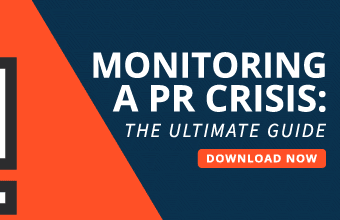Businesses are finally finding stable ground amid the COVID-19 pandemic, but a new study from consulting and communications firm Orangefiery finds that exec-level needs still persist. The research shows that while leaders have risen to the challenge of communicating with employees during the pandemic, only a slim majority of employees say they are very satisfied with the internal communications they have received.
“This pandemic has caused a great disruption,” said Mike Kuczkowski, CEO of Orangefiery, in a news release. “Communications is a critical function in a crisis, and organizations have responded well in the short term by providing employees with practical information on the pandemic’s immediate impact to the organization and how to prevent the spread of COVID-19. As it becomes clear that this will be a longer-term disruption from both a health and economic standpoint, leaders should consider ways to address employees’ needs and strengthen relationships through communications.”
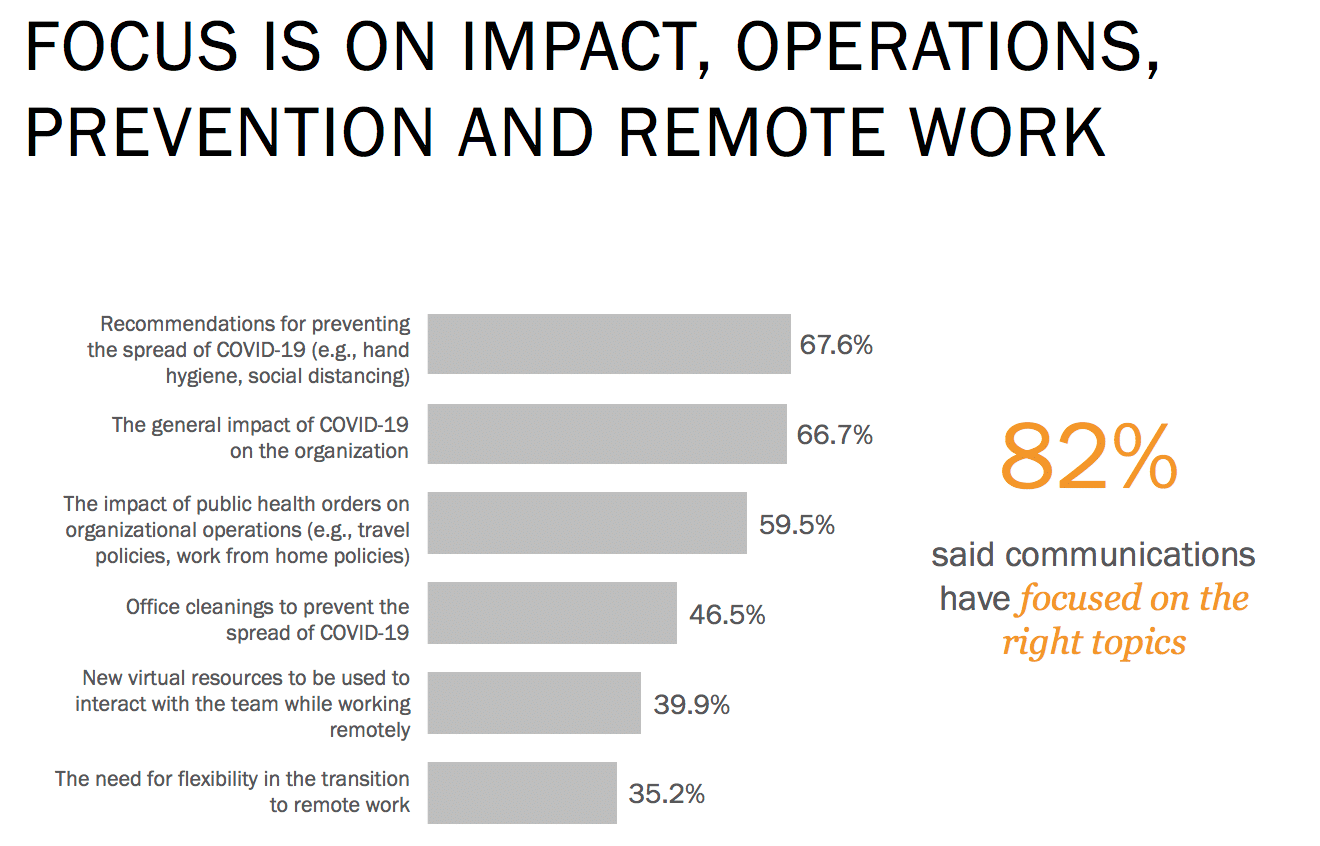
Rising to the communications challenge
In assessing the communications they’ve received from their employers about COVID-19, significant percentages of respondents said their organizations had been delivering on-topic communications (82 percent) using the right communications channels (85 percent) with an appropriate frequency (79 percent). Respondents also indicated that leaders have been keeping their promises (83 percent) by following through on doing what they said they would do and communicating what they said they would communicate.
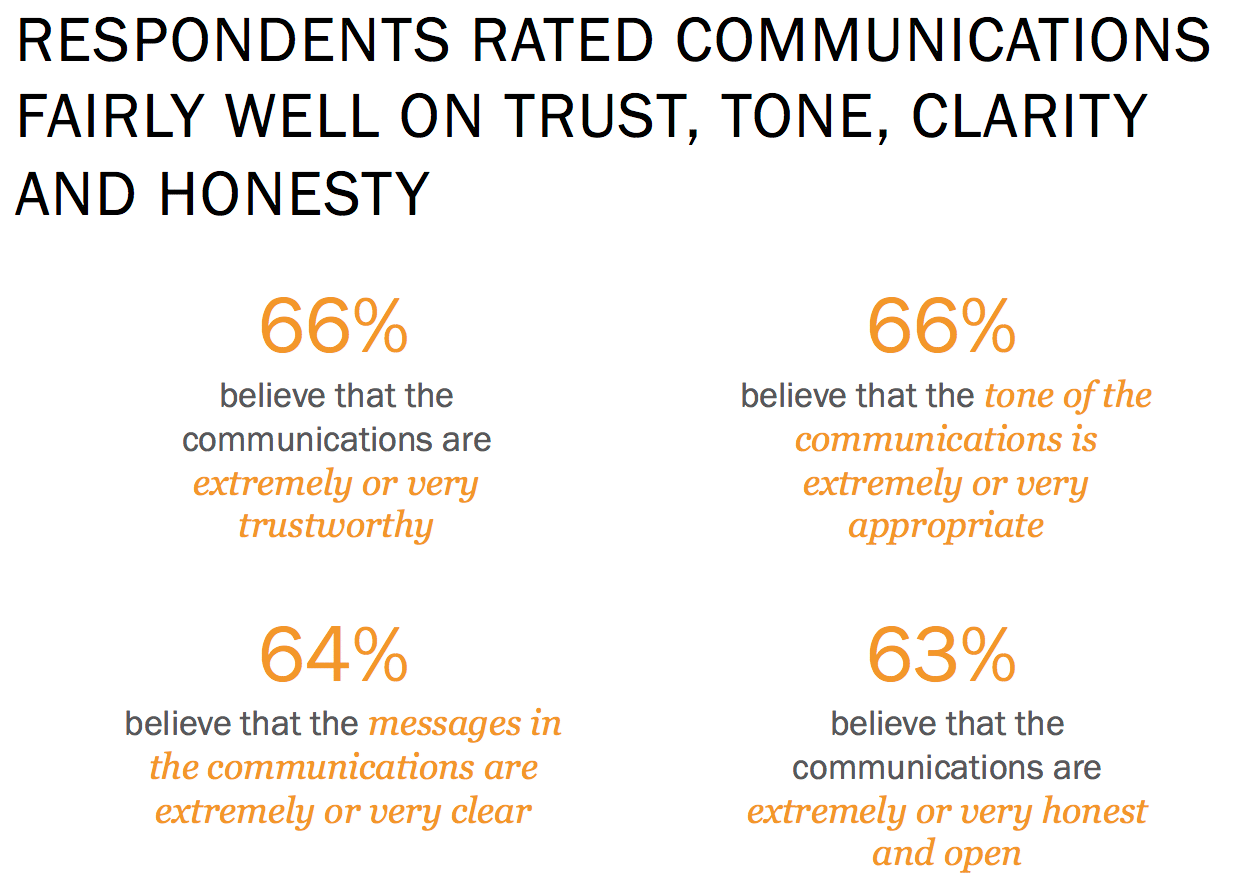
Signs communications should do more
Asked to rate the effectiveness of the communications they’ve received, smaller majorities said the communications were “very” or “extremely” trustworthy (66 percent), appropriate in tone (66 percent), clear (64 percent), and honest and open (63 percent). Fewer respondents (55 percent) said they were very or extremely satisfied with the messages they were receiving, with 11 percent saying they were not very or not at all satisfied, and only 53 percent said the messages were very or extremely useful in communicating what employees should think or do.
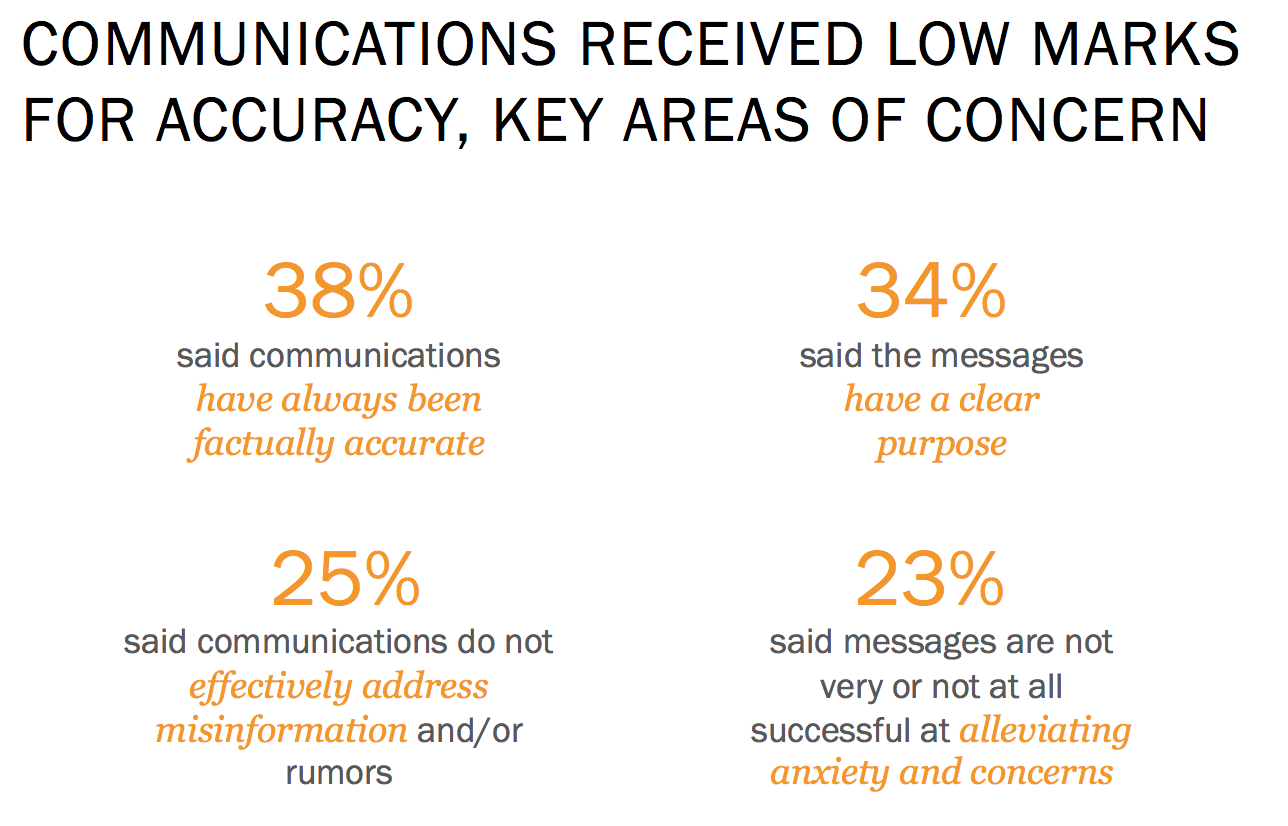
The leader-employee perception gap
In the survey, leaders rated organizational communications more highly than employees did on several issues. Leaders were more likely than employees to say that communications were very or extremely trustworthy (75 percent to 63 percent), clear (69 percent to 62 percent), honest and open (75 percent to 58 percent), successful at alleviating anxiety and concern (46 percent to 33 percent) and useful at communicating what employees should think and do (58 percent to 51 percent). Leaders also were more likely to say communications were frequent enough (85 percent to 76 percent) and clearly indicated what leaders did and did not know (29 percent vs. 21 percent).
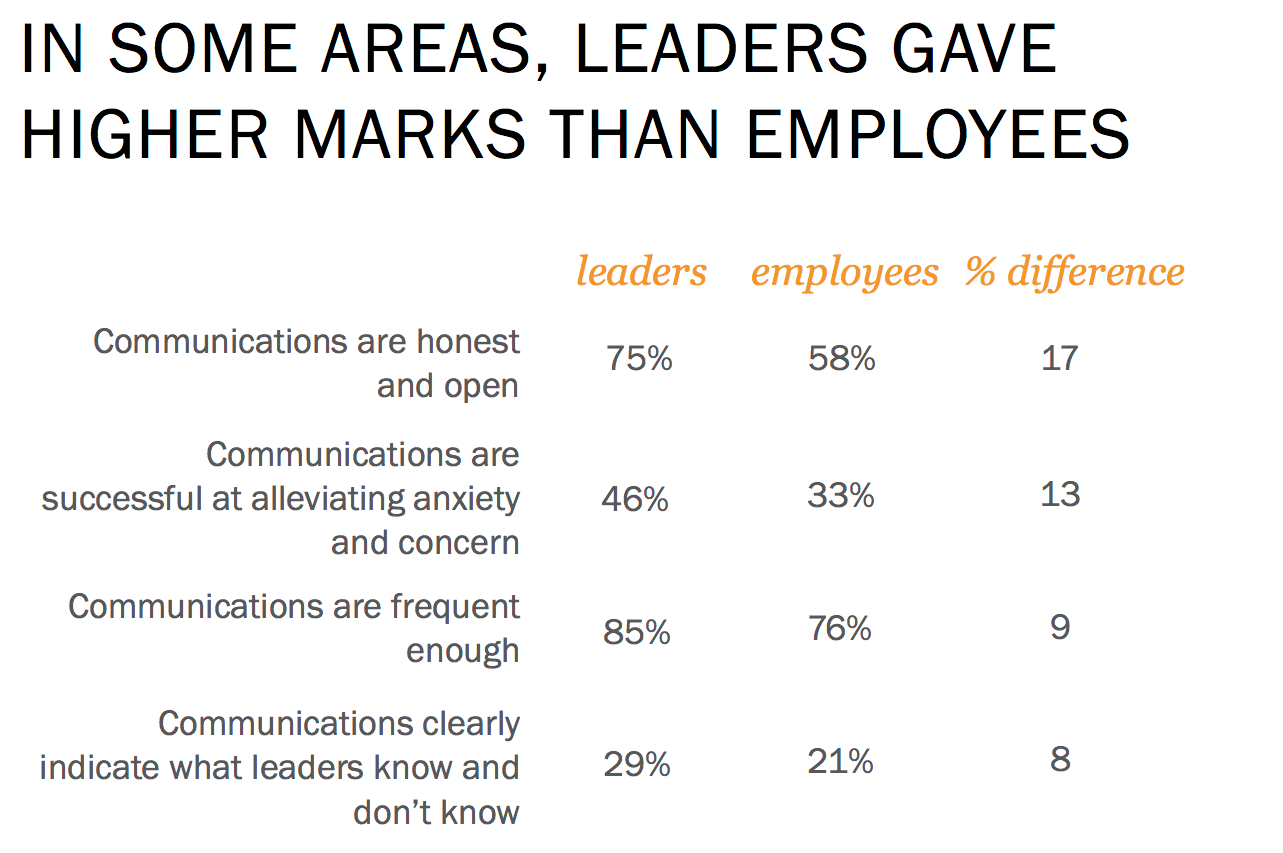
Additionally, a slim majority (54 percent) of employees said they believe their organization is very or extremely committed to satisfying employee communications needs, compared with 64 percent of leaders. Less than half of employees (43 percent, as opposed to 60 percent of leaders) said they believe their organization is very or extremely interested in hearing employee feedback during this pandemic.
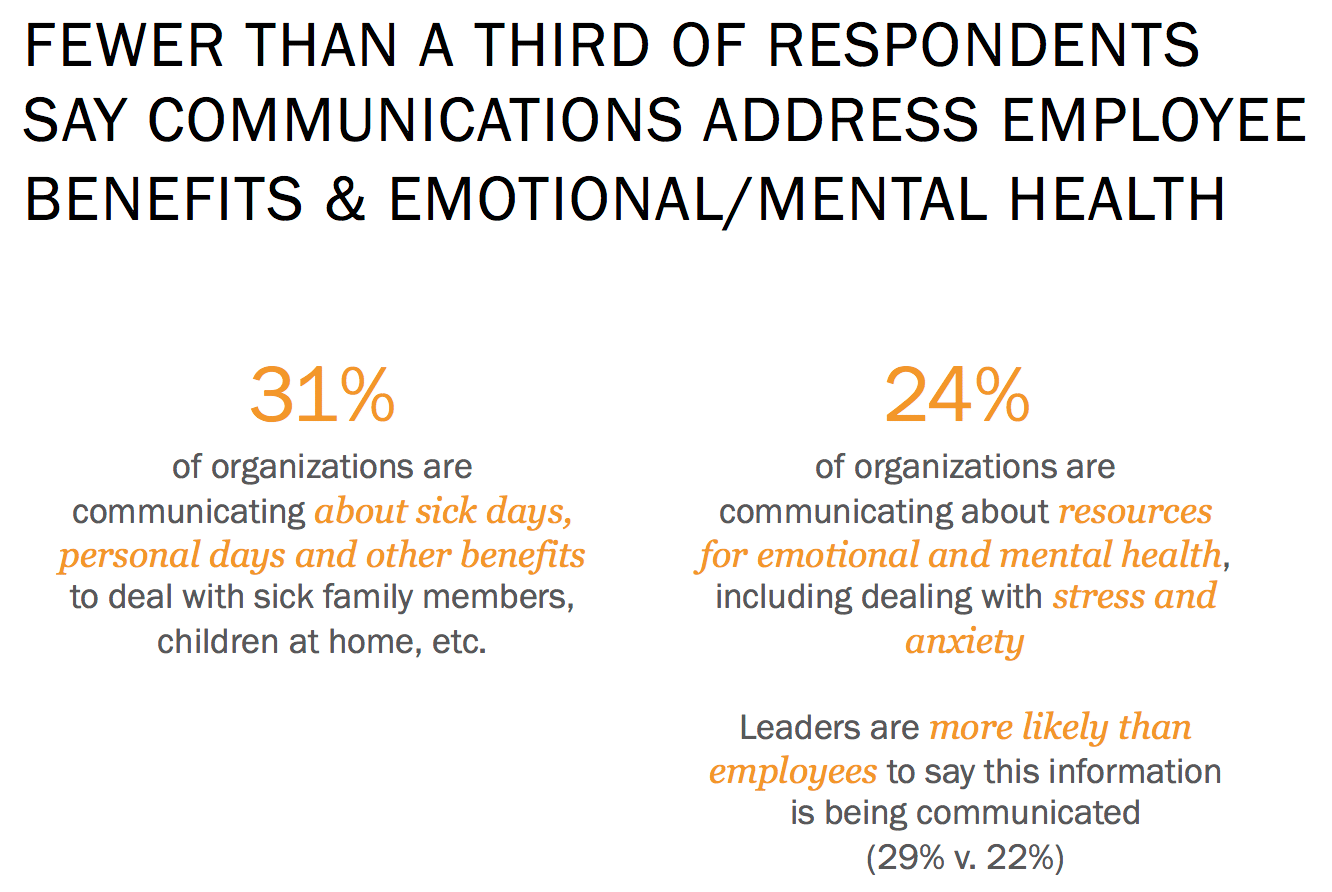
Directions for the future
In more than 200 open-ended answers to a question about what organizations should do differently for the future, respondents said they wanted to understand clear plans for the organization’s future, the impact of the disruption on their role, work and job security, information about benefits, and more consistent, frequent and direct communications from top leaders, with a number of respondents indicating that they were receiving inconsistent information depending on the source of the communication.
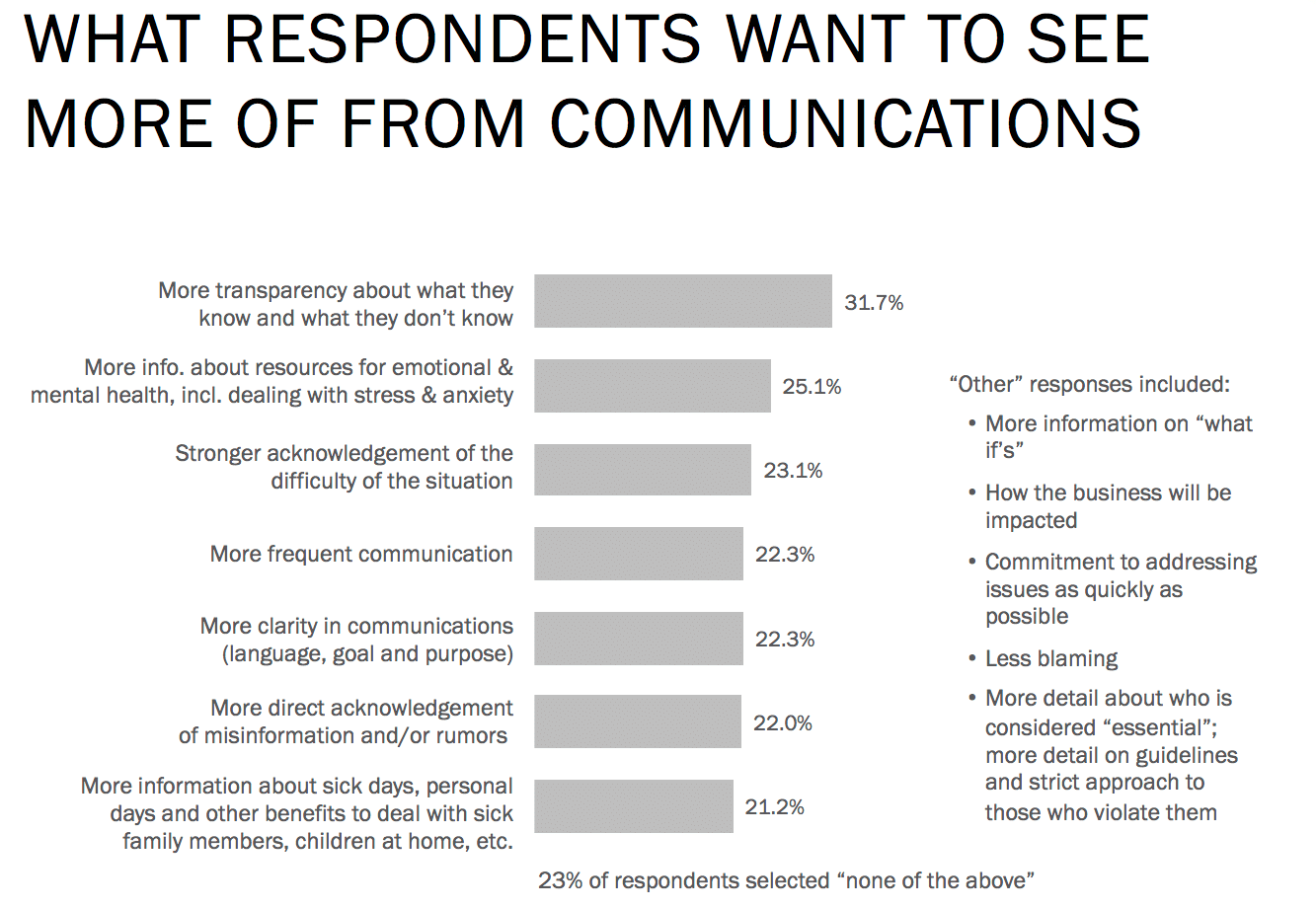
In more than 200 open-ended responses to a question about the most important thing they want leaders to know about communicating during the COVID-19 pandemic, the top six categories of responses were: be honest and transparent; stay calm and lead by example; help employees stay safe and healthy; be factual; check in and care; and be clear and direct. As one indicative response said, “Just be open and transparent with employees. These are scary times.”
“Leaders should recognize that they are giving themselves higher ratings for their performance on communications than employees are,” Kuczkowski said. “Being transparent, being as clear as possible, staying calm and showing empathy are critical. These steps, along with demonstrating openness to feedback and clarifying what the future looks like, are top priorities for building greater employee satisfaction and trust.”
The research report, Leadership Communications During COVID-19, details these findings and provides recommendations for organizational leaders responsible for helping their employee teams and external stakeholders navigate this unprecedented disruption of our lives and businesses.
Click here to download the full report.
The research was conducted online from March 25 to March 29, 2020. 454 respondents completed the survey. Of these 454 respondents, 327 identified as an “employee” and 127 identified as leaders, specifically as a “board member,” “member of the executive leadership team” or “member of the management team.” Respondents represented all regions of the United States. Respondents also represented organizations of all sizes; 27% worked in organizations with 1-50 employees, 18% with 51-200 employees, 20% with 201-1,000 employees, 14% with 1,001-5,000 employees and 21% with 5,001+ employees. All respondents were required to be employed at the time they completed the survey.







